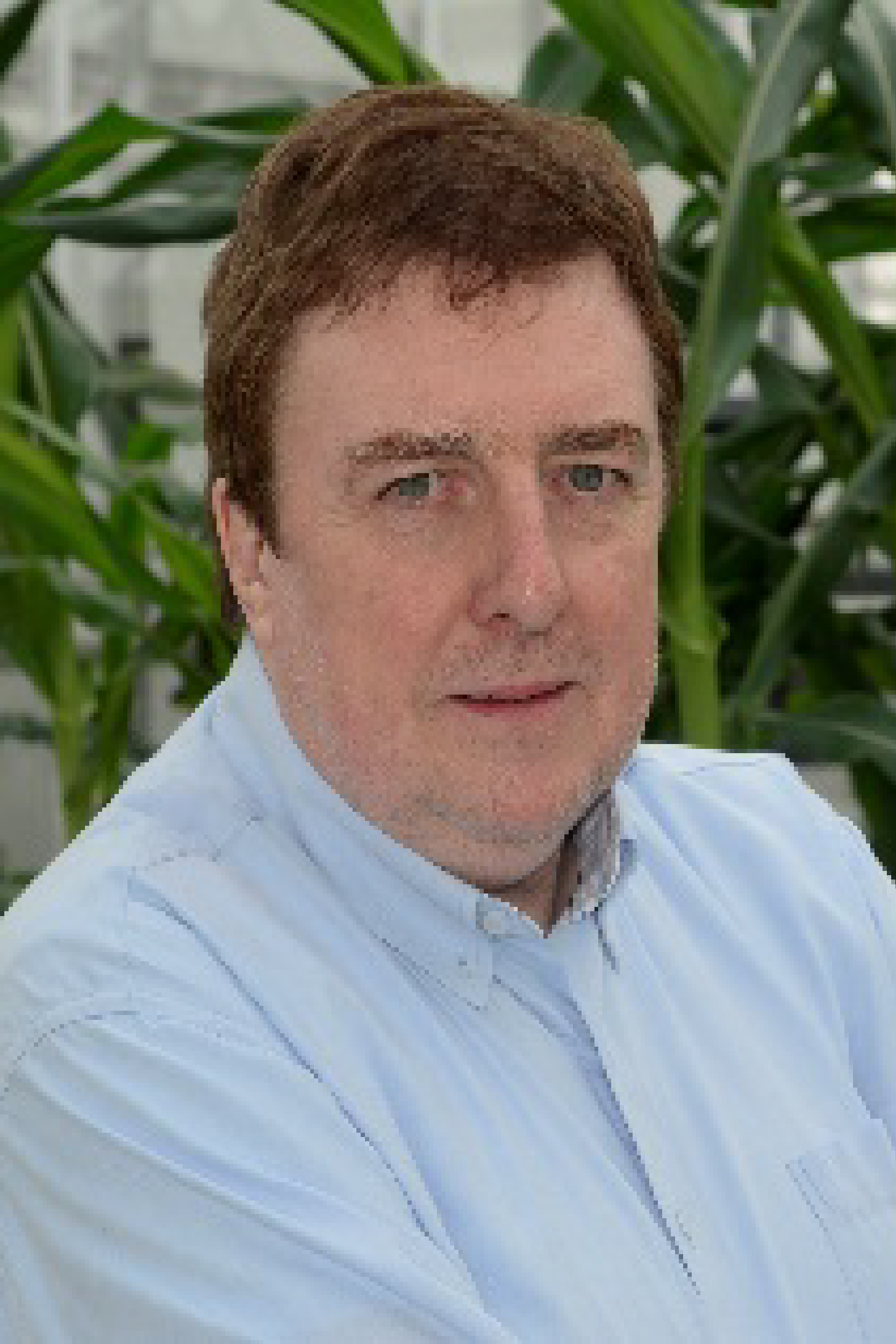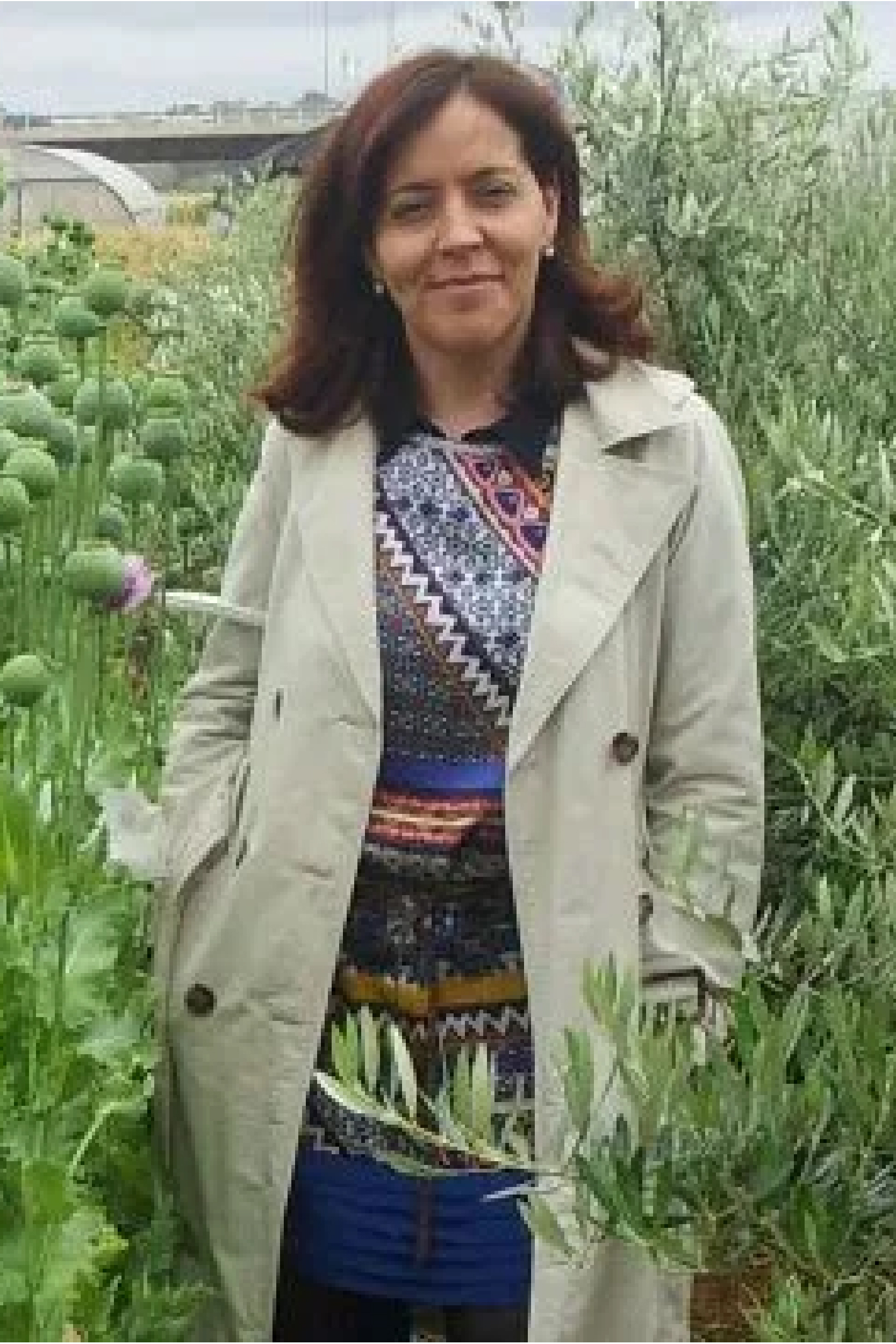Keynote Speakers
- Tito Caffi
- Stéphane Compant
- Vasileios Fotopoulos
- Dirk Inzé
- Matteo Garbelotto
- Baldissera Giovani
- Vladimiro Guarnaccia
- George Karaoglanidis
- Blanca Landa
- Antonio F. Logrieco
- Dimitris Tsitsigiannis
- Marie-Agnes Jacques
- Anna Maria D’Onghia
- Margreet van der Burg
- Panagiotis Sarris
TITLE:
Innovative Smart Technologies for Agricultural Production and Plant Health
ABSTRACT:
Pests are defined by FAO and IPPC as “any species, strain or biotype of plant, animal or pathogenic agent injurious to plants or plant products”. They can cause enormous crop loss worldwide with damages that can occur in the field, from sowing to harvesting, and also in the storage. Secure food supply for the future generations requires environmentally safe and sustainable production. Main goal of the modern agriculture is to reduce intensive fertilizer and pesticide use and decrease heavy exploitation of natural resources (water, soil, energy). Precision agriculture (PA) is a collection of agricultural practices that focus on specific areas of the field at a particular moment in time. The main goal of precision agriculture can be summarized in doing “the right thing, at the right time in the right place”). With the recent scientific advancements, technological innovations and legislatives tools it is nowadays possible to achieve these strategic goals and to increase sustainability in agriculture. In 2020, the International Year of Plant Health, the use of Smart Technologies can contribute to enhance plant health, reduce hunger and poverty, protect the environment, and boost economic development.
The actual availability of innovative tools and data management techniques, also leading to big data management and analysis requirement, allow to think about an integrated system that provides phytosanitary monitoring for some pilot crops which is effective, rapid, objective, repeatable in the most varied environmental contexts, and therefore suitable to provide appropriate support to the various phytosanitary control needs in a region or an area. It is possible to integrate into modern decision support systems information, protocol, guidance in order to allow trained personnel to carry out surveys and data collection, through information, alerts and guidelines (photographic or video supported) provided by the system.
This approach could lead to a complementary monitoring system and enhancement to the forecast models, an aspect that will allow to optimize and increase the information and alerts provided to the operator, guaranteeing a clearer and more aware picture of the phytosanitary and physiological state of the plant.
BIO:
Dr. Tito. Caffi graduated in Agriculture in 2003 and got the title of PhD in Plant Disease Epidemiology in 2010. Since 2015 he is a researcher in Plant Pathology at DIPROVES – Department of Sustainable Crop Protection – at the Università Cattolica del Sacro Cuore. He is the Instructor of different B. Sc., M. Sc. and Doctorate Courses on Plant Pathology, Crop Protection, Integrated Vineyard Protection and Technologies for Food Safety. He acted as Associate Editor for Plant Disease and he is now Associate Editor for European Journal of Plant Pathology and Phytopathologia Mediterranea. He is the National Coordinator for the EUPLANTCROPP Association (https://euplantcropp.eu).
His research activity is mainly related to the study of the epidemiological and ecological aspects of several pathogens, which affect different field and orchard crops. The main goal of his studies is to develop mechanistic, dynamic, epidemiological models able to simulate pathogens life cycle and to provide information for risk assessment and disease management. Moreover, dr. Caffi is constantly involved in both validation and evaluation of such models under different environmental conditions, and their implementation into Decision Support System aimed to help growers facing the decision-making process related to disease management. Finally, he is also studying and developing innovative methods (i.e. biocontrol agents) and strategies for disease management for organic and IPM farming and the evaluation of systems sustainability.
Click here to read more (Website)

TITLE:
The plant inside as a diverse microhabitat: communities, niches, colonization behaviour of beneficial endophytes and relation to plant growth and health
ABSTRACT:
Plant host different fungal and bacteria in organs like roots, stem, leaves, fruits and seeds. Most of them derive from the soil and the rhizosphere as stated since the XIXth century, but other sources like the anthosphere, carposphere, phyllosphere, laimosphere and caulosphere can also lead to establishment of endophytes inside plant tissues. Other microbes can further derive from animals or from plants growing near each other. A thorough understanding of the communities, routes and niches colonization of endophytes in the phytobiome viewpoint has led to a better knowledge on how to use specific microbes for stimulating plant growth and increase host health but also to understand better how plants shape their microbiome. Most of the research has been done either on fungi or bacteria but recent studies further show that some bacteria can colonize beneficial fungi internally as endofungal bacteria and increase their beneficial effects on plants, leading further to a strategy of using multipartite interaction to boost plant protection.
Session topic: Microbiomes and their role in plant health
BIO:
Dr. Stéphane Compant is Scientist working on plant-microbe interactions at the AIT Austrian Institute of Technology. He received his PhD degree from the University of Reims Champagne-Ardenne and his habilitation from the University of Bordeaux in France. Stéphane Compant was Associate Professor of Microbiology at the National Polytechnic Institute of Toulouse in France before to be project leader at AIT. SC has coordinated several research and training programmes for national and international agencies. He is a leading research expert in microbial ecology of endophytic bacteria and fungi interacting with plants, beneficial or not. He also works on beneficial plant-microbe interactions in general, and biocontrol of plant diseases using various biocontrol agents from different sources. He was member management committee France as well as STSM member on European cost action FA1103. SC also represented Austria on European cost action FA1303, co-chair of microbial ecology, EIP-Agri Pests and Diseases in Viticulture, and serves on various review committees and scientific journal boards.
Click here to read more (Website)

TITLE:
Plant and seed priming for improved growth and abiotic stress protection under a changing climate
ABSTRACT:
Increased frequency of extreme environmental events resulting from global climatic changes remarkably influences plant growth and development. Close examination of plant-to-plant communication in nature has revealed the development of unique strategies from plants for responding to abiotic stress, with one of the most interesting being through priming for improved defense responses. The process of priming involves prior exposure to a biotic or abiotic stress factor making a plant more tolerant to future exposure. Priming can also be achieved by applying natural or synthetic compounds which act as signaling transducers, ‘activating’ the plant’s defense system. An up-to-date overview will be presented describing the research carried out at the Cyprus University of Technology using priming agents towards induced acclimation of plants to environmental challenges. In addition, recent findings will be presented on the evaluation of chemical compounds as well as nanoparticles that potentially display growth promoting properties in plants, closely related to our existing expertise and previous observations in priming against stress.
BIO:
Vasileios Fotopoulos is Associate Professor in Structural and Functional Plant Biology and head of the CUT Plant Stress Physiology Group established in 2008 (www.plant-stress.weebly.com). He obtained his BSc in Horticulture from Wye College, University of London, and his MSc in Pest Management (Plant Disease) from Imperial College London. He holds a PhD in Plant Molecular Biology from the University of Southampton, U.K. His post-doctoral research was carried out at the Department of Pharmaceutical Sciences, Aristotle University of Thessaloniki, as well as in the Institute of AgroBiotechnology, CE.R.T.H. His main scientific research focuses on the study of nitro-oxidative signaling cascades involved in the plant’s response to stress factors, while emphasis is currently being given in the development of chemical and biological treatment technologies towards the amelioration of abiotic stress factors and promotion of plant growth. To date, Dr. Fotopoulos is the author of 63 scientific papers published in peer-reviewed journals (h-index=26), while he serves as Associate Editor in BMC Plant Biology, Gene, Frontiers in Plant Science and five other journals.
Click here to read more (Website)

TITLE:
1. Plant Biology and Climate Emergency
2. Genome editing: Enabling genome editing for European agriculture: will scientific evidence prevail?
ABSTRACT:
1. The world is experiencing an unprecedented climate crisis that requires urgent action at all fronts. Plant biology offers great opportunities both for adapting to climate change as well as for mitigating the accumulation of greenhouse gasses.
It is expected that higher temperatures and longer drought episodes will greatly reduce crop productivity in many area’s including the Mediterranean basin. Understanding how plants rewire their growth and development in response of environmental cues such as drought is the first step towards breeding and/or engineering stress tolerant crops. I will illustrate the challenges of achieving this ambitious goal by our research on drought responses in maize. The molecular and phenotypic comparison of drought response of maize plants cultivated in growth chambers, greenhouse and field conditions highlighted the importance of applying an experimental ‘lab to field to lab’ approach. Furthermore, drought responses involve many interacting genes. Genome editing offers great perspectives not only to tackle complex multi-genic traits such as drought but also to engineer drought tolerant crops.
Plants are fantastic organisms that evolved to efficiently use CO2 for growth and development. The selection of plants with improved CO2 sequestration capabilities, above ground and below ground, are likely to become a valuable tool to combat climate change. Obviously such plants should be resilient to environmental stresses and show a low dependency on fertilizers and agrochemicals. I will discuss various approaches on how to develop such plants for climate emergency.
2. Agriculture and food production must become more sustainable in a world facing a growing population under changing climate conditions and environmental degradation. All possible approaches, including improved plant breeding technologies, are essential to address these challenges. In order to develop new crop varieties, scientists and plant breeders need to have access to the widest possible array of breeding tools. The most recent addition to the toolbox is precision breeding, also known as genome editing with a preference for CRISPR. This technology allows for scientists and breeders to develop desired crop varieties in a faster, relatively simple and much more directed way compared to older breeding technologies.
However, there are legal and procedural uncertainties regarding the status of genome edited crops in Europe. While the CRISPR technology is being adopted at an unprecedented speed, the current regulatory framework remains outdated. Moreover, the European Court of Justice (ECJ) ruling from 2018 (C-528/16) brought even more confusion because of the interpretation that crops obtained by precision breeding are subject to the GMO regulatory provisions. This regulatory burden even applies to crops with the smallest, specific CRISPR-mediated DNA alteration, that can also occur spontaneously in nature.
The ruling leads to inconsistency in the legislation because of the fact that conventional mutagenesis -which results in thousands of random DNA alterations- is exempt from the GMO regulatory provisions. The legislation no longer correctly reflects the current state of scientific knowledge. Besides, subjecting genome-edited crops to the current EU GMO regulation will delay the development of climate-resilient crops, hinder progress in sustainable agriculture, reduce EU’s competitiveness and hamper global trade.
The ruling is hampers the cultivation of genome edited crops with beneficial traits for our health or the environment such as improved nutritional composition, improved digestibility, lower content of anti-nutritional components, reduced allergenicity or requiring less input.
The scientific community in Europe responded united and published a position paper and an open statement to call upon the European Commission and the European Parliament. With a growing number of signatories, reaching currently to 129 European research institutes and organizations, from 21 different Member States and the UK, the network EU-SAGE was launched. EU-SAGE stands for European Sustainable Agriculture through Genome Editing and aims to provide information about genome editing and to promote the development of European and EU member state policies that enable the use of genome editing for sustainable agriculture and food production. I will provide an update on the ongoing discussions with the European Commission. Hopefully scientific evidence will prevail.
BIO:
Dirk Inzé is a global leader in plant biology and an ISI ‘most cited author’. His research ambition is to obtain a holistic understanding of the molecular networks regulating plant organ growth and crop productivity. His work has opened up new perspectives for the identification of optimal growth regulatory networks that can be selected by advanced breeding, or for which more robust variants can be obtained through genetic engineering. As such, Dirk Inzé’s work significantly contributes to providing food security for the growing world population.
Dirk Inzé received his PhD at Ghent in 1984. In 1990, he was appointed Research Director of the French National Institute for Agricultural Research (INRA), where he initiated highly successful research programs on the plant cell cycle and growth control. In 1995, he became Professor at Ghent University and he was the scientific founder of the biotechnology company CropDesign, which was established in 1998 and acquired in 2006 by BASF Plant Science. In 2002, Dirk was appointed Director of the Center for Plant Systems Biology of the VIB. Under his directorship, the Center for Plant Systems Biology – currently employing approximately 300 individuals – became one of the world leading centers for advanced plant sciences. Dirk’s research was recognized by numerous awards and he is a member of several science advisory boards. Dirk currently owns, for the second time, an advanced ERC grant and his work received >51,000 citations (H-factor 129). In 2017, Dirk was awarded with the prestigious World Agriculture Prize. In 2019 he was elected to the rank of AAAS Fellow by the American Association for the Advancement of Science (AAAS).
Click here to read more (Website)

TITLE:
Cypress Canker: a model pathosystem to study fungal invasions
ABSTRACT:
Our understanding of invasions by plant pathogens lags behind compared to that of other biological invasions. Cypress Canker Disease (CCD) caused by the fungus Seiridium cardinale (Sc), has emerged as an excellent pathosystem to further our understanding of fungal invasions. By using a population genetics approach, we have shown that Sc is endemic to the interior of California, where the disease is expressed exclusively on exotic, off-site or artificially-bred cypress species. The early 1920s outbreak in the interior of California was responsible for two introductions: one in Italy and one in New Zealand. Coalescent analyses showed that Italian population of Sc played a major role in the diffusion of the pathogen throughout the Mediterranean. Phenotypic traits in Mediterranean invasive Sc populations indicate that small conidial size, high phenotypic plasticity and high sporulation potential are key traits for a successful invasion, while high virulence and high growth rate are not necessary. Comparative analyses indicate that geographically isolated S. cardinale populations are now genetically and phenotypically distinct, and by inoculating a range of California Sc genotypes on Italian cypress, we show that resistance to CCD can be eroded by California genotypes. Will a further Sc introduction occur? In a recent study, we show that within the last 20 years. the Mediterranean and California populations served as sources for new introductions in New Zealand and Morocco, respectively, thus proving additional introductions are a distinct possibility. In conclusion, our data prove that invasive populations cannot be regarded analogous to source populations that generated them.
BIO:
EXOTIC FOREST DISEASES: we are interested in uncovering the mechanisms behind invasions by exotic forest pathogens, and we use molecular tools to understand their biology, ecology, and epidemiology. We are currently working on Sudden Oak Death, Phytophthora cinnamomi and Pine Pitch Canker in California, and on Cypress Canker and Heterobasidion invasions in Europe. FUNGAL ECOLOGY: we are using beneficial and pathogenic fungi as model systems to understand issues of isolation by distance, island biogeography and community structure in relations to habitat size and age. We have projects in Central American mangroves, Matsutake mushrooms worldwide and Truffles is Europe. BIODIVERSITY and ALL TAXA INVENTORIES: we are interested in describing biodiversity and conservation of natural resources: the two major projects are BARCODING THE VENICE FUNGAL HERBARIUM and BIOCODE (Fungi) in the island of Moorea. We also use population genetics and phylogeographic studies to highlight how genetic diversity is structured (and ought to be maintained) within species. MOLECULAR DIAGNOSTICS, GENOMICS: our lab is at the forefront of testing the efficacy, sensitivity and reliability of new diagnostic tools for the detection and study of forest diseases. We are also involved in the genomic unraveling of two fungi: Phytophthora ramorum and Heterobasidion irregularis (H. annosum). MANAGEMENT OF FOREST DISEASES: we are studying the efficacy and longevity of direct chemical controls on forest diseases, with an emphasis on phosphonates because of their absence of environmental side effects. We are also interested in learning how horticultural (e.g. pruning, composting) and silvicultural (e.g. thinning) approaches may affect the epidemiology and impact of forest diseases. We are interested in detecting possible natural resistance or tolerance to Sudden Oak Deaths in oaks, tanoaks and California Bay laurel. NATIVE FOREST DISEASES and INTERACTIONS WITH INSECTS: we are interested in relationships between the airspora and infection by root rot organisms, on the effects of stump creation on root rots and on the role played by insect in vectoring vascular diseases such as blackstain root disease. Learn more about our research in the Forest Pathology and Mycology Lab website
Click here to read (Website)

TITLE:
Euphresco as a platform to link research and policy in the Mediterranean area and abroad
ABSTRACT:
Mediterranean agriculture, forests and other environments are seriously threatened by numerous quarantine and emerging pests. The negative impacts caused by these pests are expected to increase due to the acceleration of global trade and to climate change that respectively favour the movement of these organisms over long distances and facilitate their adaptation to and establishment in new environments.
In the face of these challenges, the Mediterranean region is particularly vulnerable due to the shortcomings in national quarantine systems, limited expertise and phytosanitary infrastructures, and the lack of funds for research activities in support of statutory plant health.
The strengthening of research in the field of plant health is one of the main challenges that countries in the Mediterranean region have to address. The diversity of priorities both in terms of pests and in terms of infrastructures and skills has reduced the impact of national efforts, but plant health challenges require rethinking of the organization of research activities in all countries and their coordination in order to increase efficiency and impact.
Coordination at Mediterranean level will reduce the fragmentation of actions; it will promote convergence of national programmes; it will build critical mass.
In this context, several Mediterranean organizations and initiatives have joined forces to improve international collaboration in and coordination of research efforts on plant health and plant protection of Mediterranean countries. The various activities undertaken so far and the results of discussions with Mediterranean country representatives will be presented.
BIO:
Dr Giovani holds a PhD in biochemistry and molecular biophysics and worked for a number of years as a researcher in world leading universities, governmental agencies and private companies. Since 2008 he has been interested in research funding, international research cooperation and transnational public‐public partnership. He joined EPPO in 2014 as coordinator of the Euphresco network for phytosanitary research coordination and funding.
Click here to read more (Website)

TITLE:
Fungal pathogens of wood: are they a threat to Mediterranean fruit crops?
ABSTRACT:
Intensification, diversification and globalization regularly happen, causing a broad range of collateral effects on agriculture. The risks of disease dissemination via trade and the movement of goods and people is increasing. Moreover, climate change is also affecting plant health by modifying the interactions between host plants, pathogens and the environment.
Fruit tree plantations are increasingly threatened by fungal diseases. It has been also observed how fruit trees share fungal pathogens with woody plants that are not considered to be trees. Both primary and opportunistic pathogens can cause various symptoms such as cankers, twig blight and wood rotting. Diaporthe and Neofusicoccum spp. are examples of pathogens able to infect a broad range of fruit trees. Moreover, there are numerous latent pathogens such as those in the Diatrypaceae family or in the Cytospora and Neocosmospora genera, and many others.
Recent findings about fungus/host combinations will be presented, with emphasize on the connection between species identification studies and the development of modern diagnostic tools. Moreover, factors such as cultivar diversity, propagation material health and rootstock selection, need to be investigated in relation with the pathogens, for providing the necessary support to the producers of a such high economic important agriculture sector.
BIO:
Vladimiro Guarnaccia obtained his PhD in Plant Health Technologies and Protection of Agro-ecosystems at University of Catania, Sicily, where he has worked up to 2015 on fungal pathogens of ornamental plant and tropical fruit crops in the lab group of Full Professor Giancarlo Polizzi. Then, he moved to The Netherlands working as post-doc researcher at Westerdijk Institute (formerly CBS). Here, guided by Full Professor Pedro Crous, explored the fungal species causing wood diseases of citrus and other fruit crops. He worked at the University of Stellenbosch, South Africa, involved in different projects guided by Dr Jan Van Niekerk about characterization and biological control of fungi causing trunk disease of citrus trees.
Since February 2019, he is Assistant Professor at the University of Torino, working in the team of Agroinnova, where a broad research programme is led by Full Professor Lodovica Gullino. Berry fruit, apple, cherry, peach and other fruit crops are economically important in Northern Italy. Thus, he is currently working on wood diseases of these crops, looking at the fungi involved, their association with stressed plants and pre-plantation diagnostic.
Member of the editorial board of “Phytopathologia Mediterranea” and “FUSE” journals, he is active peer-reviewer for many scientific journals on Plant Pathology and Mycology.
Click here to read more (Website)

TITLE:
Fungicide resistance in Botrytis cinerea populations from protected crops in the Mediterranean basin: Current status and implications with its management
G. KARAOGANIDIS. and A. SAMARAS. Plant Pathology Laboratory, Faculty of Agriculture, Forestry and Natural Environment, Aristotelian University of Thessaloniki, POB 269, 54124, Thessaloniki, Greece E-mail: gkarao@agro.auth.gr
ABSTRACT:
Botrytis cinerea is one of the most destructive pathogens infecting numerous crops. Among them are included several important crops cultivated in the Mediterranean basin such greenhouse grown vegetables or strawberries. Resistance of the pathogen to fungicides used for its control is widespread throughout the Mediterranean basin in crops heavily treated such as those cultivated in greenhouses and it is associated with reduction in product`s performance and control failures.
In this report the current status of resistance to major botryticide groups such as SDHIs, QoIs, hydroxyanilides or anilinopyrimidines in Botrytis spp. populations will be reviewed and detailed information will be given on the methodologies of resistance detection, variability of mutations conferring resistance to fungicides, their effect on the fungal sensitivity to the different active ingredients and the fitness of resistant strains. Furthermore, implications of cross-resistance patterns complexity and fitness cost for the resistant mutants will be discussed in relation to resistance management in greenhouse grown vegetables taking into account the recent introduction of new active ingredients into the agricultural practice, such as new molecules belonging into SDHIs.
Additionally, future prospects and challenges will be presented with emphasis on the role of alternative control methods such as the integration of Biological Control Agents (BCAs) with conventional fungicides in reducing the fungicide selection pressure on fungal population and, thus, minimizing the risk for resistance development.
BIO:
Associate Professor George Karaoglanidis is plant pathologist with more than 20 years of research experience in the field of Plant Pathology. His research interests focus on: a) investigations related to fungicide resistance development by plant pathogenic fungi (resistance mechanisms, development of resistance detection methodologies, development of fungicide resistance management measures), b) development and evaluation of disease control strategies alternative to the chemical control, and c) investigations on the etiology and characterization of postaharvest pathogens. He is author of: a) 58 papers published in SCI journals (citations >1.100, h-index 22), b) 4 review book chapters and c) 126 oral/poster presentations in international and national conferences (several of them as invited speaker). He has served as reviewer for >180 paper submitted to SCI journals, while he has participated in research proposals evaluation panels submitted in national and EU calls. He has served as coordinator in 5 research projects funded by GSRT while he has participated as member of the research consortium in more than 10 research projects funded by EU or national funds.
Click here to read more (Website)

TITLE:
Current situation of Xylella fastidiosa in Spain: Main research projects ongoing to understand and tackle this pathogen
ABSTRACT:
X. fastidiosa (Xf) was first reported in 2016 in Majorca, in the Balearic Islands, and in 2017 in Alicante province, Mainland Spain. Currently, three Xf subspecies and four STs have been detected in the Balearic Islands (subsp. fastidiosa ST1, subsp. multiplex ST7 and ST81, and subsp. pauca ST80). On the other hand, only Xf subsp. multiplex ST6 have been detected in the Valencian Community where the Demarcated Area covers an extension of >136,200 hectares, of which over 1,100 hectares, 12,500 orchards and 90,000 trees have been already eradicated as of November 2021. This talk will present the main research initiatives going on in Spain aimed to understand Xf epidemics and mitigate its impact not only in Spain, but also in Europe. These main research initiatives have contributed to fill knowledge gaps on Xf in Europe, gathering fundamental information on several aspects: i) Characterizing the genetic population structures of X. fastidiosa in the different EU outbreaks, including Spain, and linking the genetics of the bacterium with its pathways of entry, ii) testing and developing new diagnostic tools based on molecular and proximal- and remote-sensing approaches; iii) searching for new control tools targeting the bacterium in the plant or searching for host resistance, and iv) understanding the epidemiology and modeling disease development and developing risk analysis. All these results have contributed to provide elements to inform Spanish and EU policy related to Xf management at different spatial scale (from regional to EU level) and socio-economic contexts.
BIO:
Research scientist in Plant Pathology at the Institute for Sustainable Agriculture, Spanish National Research Council (CSIC). I have devoted most of my career to the study of : i) the biological quality and phytosanitary status of soils and the environmental and agronomic practices influencing it; ii) soil suppressiveness to soilborne plant pathogens; iii) isolation and selection of microbial antagonists to control plant pathogens; and iv) study of the plant microbiome and its role in modulating host response to xylem-inhabiting wilting pathogens. In the last years, I have focused my research on the study of the biology and epidemiology of the main Vascular diseases of olive (Verticillium dahliae, Xylella fastidiosa) and the development of diagnostic tools and management methods to fight them.
Click here to read more (Website)

TITLE:
From Myco-Key To Myco-Twin: Mycotoxin Management Along Food/Feed Chain
ABSTRACT:
Fungal disease is one of the most important contributors to the occurrence and severity of mycotoxin contamination of crop plants. Phenotypic and metabolic plasticity has enabled mycotoxigenic fungi (MF) to colonize a broad range of agriculturally important crops and to adapt to a range of environmental conditions. New mycotoxin-commodity combinations provide evidence for the ability of fungi to adapt to changing conditions and the emergence of genotypes that confer enhanced aggressiveness toward plants and/or altered mycotoxin production profiles. Among diseases caused by MF, the most important are the result of attacks carried out by species complexes. Examples of these diseases are the Fusarium ear rot of maize, Fusarium head blight (e.g. wheat, barley, and oat), black point of wheat kernels by Alternaria alternata species complex and related species; and various rot caused by Aspergilli. Mycotoxins in plant products and in processed food and feed have a significant economic impact and pose a serious problem for animal and human health. The management of good agricultural practices in the pre- harvest is a key issue for minimizing the risk of mycotoxin accumulation in the crops before the harvest. Such practices can involve crop rotation, tillage, proper fertilization and fungicide or biological control distribution, variety selection, timely planting and harvests and the control of the insects which often facilitate the toxigenic fungal species infection. Moreover, it is extremely important to prevent post-harvest contamination and develop practical and effective post-harvest procedures for mycotoxin reduction in the food supply chains and to provide alternative and safe use options for contaminated batches. An update review will be given on integrated management of pre-and post harvest practices aiming at the minimizing the risk of mycotoxin contamination along chain and main effective solutions developed by EU MycoKey (http://www.mycokey.eu/) and MycoTwin (https://www.mycotwin.eu/project) projects.
BIO:
Dr. Antonio F. Logrieco, Director of CNR-ISPA (http://www.ispacnr.it/). Scientific responsible and coordinator of various national and international projects dealing on Plant pathology and food safety, with particular attention on mycotoxin problem including MycoKey; “Integrated and innovative key action for mycotoxin management in the food and feed chain) –MycoKey Horizon 2020 (http://www.mycokey.eu/ ) .
He is former Past-President of International Society for Mycotoxicology (http://www.mycotox-society.org) and acting President of Mediterranean Phytopathological Union (http://www.mpunion.eu/) . He was President of ISPP “Fusarium Committee”.
Elected as member of Hungarian Academy of Sciences and nominated as Distinguished International Supervisor of Institute of Food Science and Technology, Chinese Academy of Agricultural Sciences. Honorary instructor of annually Fusarium training workshop at Kansas State University, USA.
Click here to read more (Website)

TITLE:
Integrated pest management smart technologies to precisely detect and control plant diseases
ABSTRACT:
The ever-increasing demands of international markets for safe food have led to the development of integrated plant protection strategies for a more efficient and sustainable agriculture and to more robust certification and control systems for agricultural products. Novel integrated management systems (IPMs) of particularly serious plant diseases and mycotoxin contamination of plant products are being developed using innovative smart agricultural systems. The purpose is to: (a) accelerate the prognosis of disease outbreaks through prediction models; (b) develop advanced methods of artificial intelligent diagnosis using spectral imaging techniques or mass spectrometry sensors for accurate detection and assessment of disease severity; (c) evaluate novel biocontrol and chemical plant protection products to control effectively the diseases; (d) develop innovative prototype sprayers actuating different nozzle types and adopting variable rate control based on canopy characteristics, the pathogen dispersal and disease development. We also develop and validate Decision Support Systems (DSS) based on computer-based knowledge systems that enable disease prediction and monitoring by combining epidemiological data, biological and chemical control strategies and precision farming tools. These systems determine the critical stages of the various plant protection spray interventions taking into account (a) the environmental conditions (temperature, rainfall, relative air humidity and leaf wetness obtained from local meteorological stations), (b) the developmental stage of the host, (c) the cultivation practices, (d) the microbiological load and other parameters. The ultimate goal of the smart technologies is to reduce the European agriculture reliance on agrochemicals resulting in lower residues and reduced impacts on human health.
The presented research has received funding from the European Union’s Horizon 2020 research and innovation programmes under grant agreement No 773718 (OPTIMA) and No 778219 (OchraVine Control).
BIO:
Assοciate Professor of Plant Pathology
Director of Plant Protection and Environment Section
Agricultural University Of Athens
Ass. Prof. Dimitris Tsitsigiannis research group is working on developing and evaluating in the lab and in the field more effective, smart, durable and environmentally sustainable integrated management strategies to control important plant diseases utilizing classical, molecular and innovative plant pathology approaches. His special research interests are: 1) Smart solutions to improve diagnosis, forecasting, monitoring and management of plant pathogens and diseases utilizing technology and service innovations (e.g. applications for remote and mobile diagnosis, precision agriculture) 2) Integrated management of mycotoxigenic fungi and mycotoxins in pistachios, grapes, corn and barley (epidemiology, evaluation of resistant/tolerant varieties, evaluation of biocontrol products and fungicides), 3) Integrated management strategies of olive anthracnose and Alternaria bud and blossom blight of olives, 4) Elucidation of pathogenicity mechanisms of mycotoxigenic fungi and the soilborne plant pathogen Verticillium dahliae. 5) Investigation of the role of novel genetic factors and molecular mechanisms involved in plant innate immune system.
Click here to read more (Website)

TITLE:
Research mobilization in France to fight the threat posed by Xylella fastidiosa
Marie-Agnès Jacques, Martial Briand, Enora Dupas, Sophie Cesbron.
ABSTRACT:
Once thought to be restricted to the Americas, the plant-associated bacterium Xylella fastidiosa has been blooming since 2013 in Europe. Strains of this bacterium were detected in 2015 in Corsica and later on in continental France. A large diversity of plants comprising mostly ornamental plants was detected infected by diverse strains of the bacterium. Comparative genomics and adapted typing methods allowed to reconstruct their evolutionary history and to give clues concerning its routes of introduction. French research teams contribute to a better knowledge of this priority pathogen by providing complementary knowledge of the biology of this pest, its dissemination and factors impacting dispersal, and the trophic network involving this bacterium, its hosts and its vector. This research mobilization is included in the large European research mobilization and has beneficiated from dedicated European projects.
BIO:
MAJ got her PhD from Paris-Orsay University in 1994 on a thesis dealing with Quantitative ecology and physiology of the epiphytic bacterial community. She participates in the first studies showing that epiphytic bacteria are forming biofilms on leaf surfaces with Cindy E. Morris, INRA France. She went to Oxford, UK for a one-year Post-Doc in Mark Bailey’s lab to learn molecular methods to characterize bacterial strains in biofilms. She got hired at INRA and developed her own project on epidemiology and ecology of seed-borne bacterial diseases with a focus on bean-associated aerial diseases and role of biofilms in epidemiology and seed-transmission. More recently, she got involved in several projects focusing on leaf-associated commensal bacteria, their interactions with pathogenic bacteria, their potential role in evolution and emergence of novel pathogens.
She has been involved in projects dealing with Xylella as soon as the first contaminated plants were detected in France in 2012. In order to properly identify the strains isolated from intercepted plant material and later on from naturally infected plants from natural settings in Corsica and in PACA region, France, she used various taxonomic assignation and typing methodologies, and propose novel assays. Her main projects aim at identifying the host range of strains detected in France and gain a better understanding of the evolutionary history of this pathogen and decipher its route of invasion.
Click here to read (Website)

TITLE:
1.Ciheam Policy in Plant Health to Enhance Food Security in the Mediterranean Region
2. Applications of remote sensing and information technology in the surveillance of quarantine diseases of fruit tree crops
ABSTRACT:
1.Most of pests and diseases affecting Mediterranean crops are seriously compromising food security and, consequently, the sustainability of rural populations in several countries in the Mediterranean region. The importance of Plant Health has been clearly highlighted by UN that has declared the 2020 as the International Year of Plant Health. CIHEAM, an intergovernmental Organization of 13 Member States, has gained a long experience in plant health which is one of the main pillars of the CIHEAM Strategic Agenda 2025 – adopted in 2016 by the Ministries of Agriculture of CIHEAM Member States. It is approached through: training of researchers, officers, professionals; applied research linking local scientists with the international research communities; participatory governance that means encouraging discussions and interactions among scientific, institutional and private stakeholders; and cooperational developing programmes enhancing country capacity building and awareness raising. The CIHEAM Institute of Bari, in particular, has more than 30 years of experience in plant health, implementing and financing numerous international research initiatives in the Mediterranean region and neighboring countries (e.g. Iran, Sultanate of Oman, Iraq). It is also engaged in several initiatives funded by the Italian Cooperation addressing plant health in several countries (Mediterranean, Balkan, African, Near eastern and Middle eastern countries). These initiatives have delivered institutional capacity building and technical assistance to hundreds of officials of national and local entities. Furthermore, in line with the statutory mission of CIHEAM Bari (higher education, research and development cooperation), since 1985 the Institute has delivered specialized and post-graduate diplomas on Integrated Pest Management to thousands of trainees coming from over 50 countries. Particular attention of CIHEAM is posed on early surveillance, detection and control of transboundary pests and diseases which may seriously threat crops, environment and sustainability of rural populations (e.g. Xylella fastidiosa). The achieved results have demonstrated that it is possible to ensure the shift towards sustainable production if quarantine measures are strengthened and a comprehensive phytosanitary management is applied. CIHEAM initiatives are therefore focusing on harmonizing national rules with the EU technical/ phytosanitary/ legal standards, in order to safeguard agriculture and promote improvement in domestic and export trading of safer food in conformity with Governments’ strategic plans.
2. Early and accurate detection systems for quarantine diseases of fruit tree species are essential for efficient large-scale surveillance, rapid implementation of control measures and evaluation of their effects. The new frontiers of technology can also offer several smart solutions in the field of plant health, facilitating the task of operators in implementing more efficient, accurate, timely and cost-effective real-time and large-scale surveillance programs. It is therefore necessary to have a considerable amount of data (e.g. climate, geographical, satellite, diagnostic) accurately captured at a distance and on the ground, using applications, sensors, forecasting models, specific diagnostic methods, etc. To this aim, Remote sensing (RS) can help to identify infections on a large scale, even when symptoms are not yet visible. There are many platforms and sensors designed for the acquisition of remote sensing data, ranging from satellite, aircraft and, more recently, UAS. The availability of high resolution time series of images such as Sentinel-1 and Sentinel-2, introduced with the European Copernicus programme, has greatly facilitated the scale-step in the use of Earth Observation (EO) data for agricultural and phytosanitary applications. In addition to RS, Information Technology (IT) is another important tool for plant protection programs allowing accurate storage, retrieval, transmission and manipulation of monitoring data. Various IT tools can be used for this purpose such as diagnostic devices, Apps (accurate on-site data acquisition), DSS, etc. An overview on RS and IT systems is provided, with particular reference to those already available and applied in the official pathogen monitoring programmes (Citrus tristeza virus, Xylella fastidiosa in Apulia region, Italy), e.g.: (i)an automatic procedure for tree counting, using GeoEye-1 multispectral image; (ii)prediction maps using WordView-2 satellite image in GIS environment for early detection of CTV-suspected trees; (iii)photointerpretation of high-resolution aerial images for the identification of OQDS trees in the demarcated area of X. fastidiosa; (iv)several applications for accurate field data acquisition by NPPOs (e.g. Apps for Xylella fastidiosa, XylApp, XylAppEU, XylAppNENA) and citizens (XylAppcitizens); (v) integrated DSS made of database, forecasting models and users interfaces.
BIO:
Head of the Knowledge Unit on Precision Crop Protection
Scientific Coordinator of the CIHEAM International Master of Science on ‘Precision IPM of fruit and vegetable crops’
Coordinator of the CIHEAM Bari National Accredited Laboratory of for official diagnostic analyses of harmful plant pathogens
Head of the CIHEAM Bari Center for the production and conservation of pathogen-free accessions of fruit tree species
She has over 30 years of experience in education/training, applied research and international cooperation in:
- Integrated Pest management
- Certification of plant propagating materials and Plant quarantine
- Pest surveillance, monitoring, detection, characterization, epidemiology and control
Over the last 12 years she has focused research on Precison Crop Protection: remote sensing and computer applications in combination with forecasting models and advanced diagnostic methods for early pest surveillance, detection and control.
CIHEAM representative at the board of several international organizations, e.g
- Mediterranean Phytopatological Union (MPU)
- EUPHRESCO (EU PHytosanitary RESearch COordination and funding)
Member of the IPPC/FAO Scientific Committee of the International Year of Plant Health 2020 (IYPH2020)
EUPHRESCO award as ‘Scientist of the month’ for the coordination of the project PHeRS on ‘Remote sensing applications in plant health’
Coordinator/WP leader of several research projects, e.g.
- MULTITRACE (Italian Ministry of Economic Development) – Advanced computer systems and technologies for traceability in Phytopathology
- AGREED (Italian Ministry of Economic Development) – Agriculture, Digital and Green
- Xf-ACTORS (EU-Horizon 2020)- Implementation of sampling schemes and innovative tools for early detection of X. fastidiosa in host plants and insects
Co-Editor of 6 books, co-author of 1 chapter and co-author of over 250 publications in scientific journals.
Co-Editor for Phytopatologia Mediterranea and reviewer for various scientific journals (e.g. Plant Pathology, Journal of Phytopathology)
Click to read more information (Website)

TITLE:
Gender in plant health and pathology: exploring the research agenda
ABSTRACT:
This presentation will take the audience on a short journey to explore gender into the plant pathology research agenda. With some historical and contemporary examples it will be illustrated how women differently from men are connected to plant health and pathology and its research. It ends with showing windows of opportunity what research including gender can help dealing with the current challenges the field faces.
BIO:
Margreet van der Burg is senior university lecturer/research Gender Studies at Wageningen University, the Netherlands. She examines food, agricultural and rural research and development from a gender perspective. She takes in the gender dimension as also intersecting with other social dimensions. Her work includes gender and the development of agricultural educational and knowledge systems, family farming, agriculture oriented organisations, as well as rural, agricultural and food iconography and heritage. She expanded her work from the Netherlands to the European/western level, and from 2000s onwards to the global level, both historical and contemporary. Within her position at Wageningen, in 2006 she also served as Rural Gender Studies Guest Professor in the Maria Goeppert-Mayer Professoriate Program from German Lower Saxony, at the Institute for Rural Development, Faculty of Agricultural Sciences, Goettingen, Germany. 10 years later she was visiting scholar with Carolyn Sachs, Professor in Rural Sociology and Women’s Studies at PennState University USA. Currently, she is daily project leader of the EU Horizon 2020 Gender-SMART project for her institution, and within the project consortium she is workpackage leader for the integration of gender into education, research and funding. Through the years, she engaged in many professional and outreach activities such as TV documentaries, travelling exhibitions, and conferences as well as in building professional networks and organisations.

TITLE:
Molecular host-microbe interactions in plants: from microbes to host innate immunit
ABSTRACT:
In their long history of interspecific interaction, plants and invading microorganisms –beneficial or pathogenic – are constantly embroiled in complex co-evolutionary dynamics. Several plant associated microorganisms have acquired an arsenal of sophisticated colonization mechanisms to manipulate the physiological processes of their hosts. These mechanism also include specialized proteins, known as “effectors” that are utilized by microbes to promote colonization.
However, their molecular function(s) and their targets in the host-cell, are largely unknown, for the vast majority of these effectors. Today, this still is one of the major questions in the Molecular Plant-Microbe Interactions (MPMI) research field. However, the effectors’ activities/functions can be used as tools to identify important components of plant innate immunity and physiology that could potentially lead to innovative strategies for crop improvement.
Plants, on the other hand, have evolved a well-organized and complex innate immunity system, to recognize invasion. The recognition occurs through the perception of microbial structural patterns, as well as, the secreted effector proteins, by specialized transmembrane or intracellular receptors of the host-cell. The microbial effectors are mainly recognized, in resistant hosts, by members of the NLR (Nucleotide-binding Leucine-rich Repeats receptors) receptors’ family. The elucidation of plant NLRs’ molecular function, will significantly help the future development of novel and/or synthetic immune receptors with new recognition capacities, in crops.s.
BIO:
Professor Panagiotis F. Sarris: received a degree in “Molecular Biology and Biomedicine” from the State University of “St. Clement of Ohrid” in Sofia (1999).
He received the first MSc in “Clinical Chemistry and Microbiology” from the Bulgarian Academy of Sciences (2000) and the second MSc in “Plant Molecular Biology and Biotechnology” from the Department of Biology of the University of Crete (2004).
He was awarded a PhD in “Molecular Microbiology and Host-Microbe Interactions” in 2009 from University of Crete.
During his PhD thesis he studied the roles of different bacterial secretory systems and effector proteins in molecular plant-microbe interactions.
From 2011 to 2015 he was a Senior Research Associate at The Sainsbury Laboratory – TSL in UK (in the group of Prof. J. Jones).
In 2015 he was elected as an Associate Professor at the University of Exeter (School of Biosciences), where he remains to this day as an Honorary Professor.
In 2017 he was elected as a Principal Investigator at the Institute of Molecular Biology and Biotechnology (IMBB) of FORTH, where he remains today as a collaborating faculty member.
In 2019 he was elected as an assist. Professor of Microbiology at University of Crete.
His research is mainly focused on the elucidation of the “molecular dialogs” taking place during host-plant colonization by microbes (pathogenic and/or beneficial).
Research topics:
– Effectoromics
– Plant NLRs biology
– Plant Microbiomes

